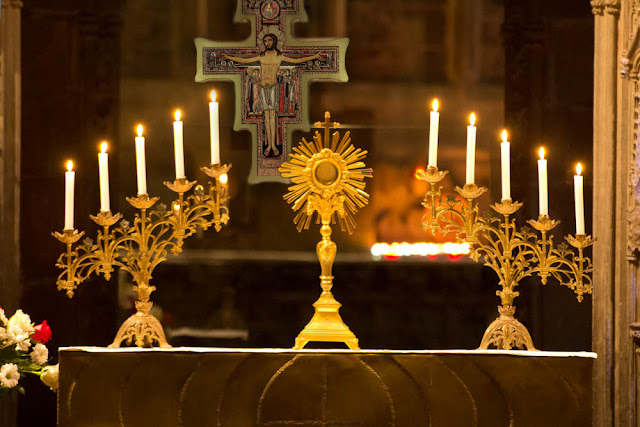Corpus Christi
A 13th century Eucharistic miracle was the origin of the Feast of Corpus Christi, which the Church celebrates on the Thursday following the Solemnity of the Holy Trinity; although in some countries the local Churches decide to transfer it to Sunday for a pastoral matter.
In this solemnity the Church pays the Eucharist a public and solemn worship of adoration, gratitude and love, the Corpus Christi procession being one of the most important in the entire Universal Church.
In the middle of the 13th century, Fr. Peter of Prague doubted the presence of Christ in the Eucharist and made a pilgrimage to Rome to pray on the tomb of Saint Peter for a grace of faith. Upon returning, while celebrating Holy Mass in Bolsena, in the Crypt of Santa Cristina, the Holy Host bled staining the body.
The news quickly reached Pope Urban IV, who was very close in Orvieto, and ordered that the corporal be taken away. Later, the Pontiff published the bull “Transiturus”, with which he ordered the Solemnity of Corpus Christi to be celebrated throughout the Church on the Thursday after Sunday of the Holy Trinity.
The Holy Father entrusted Saint Thomas Aquinas with the preparation of a liturgical office for the feast and the composition of hymns, which are sung to this day: Tantum Ergo, Lauda Sion.
Pope Clement V at the General Council of Vienna (1311) once again ordered this feast and published a new decree incorporating that of Urban IV. Later John XII urged their observance.



Comments
Post a Comment